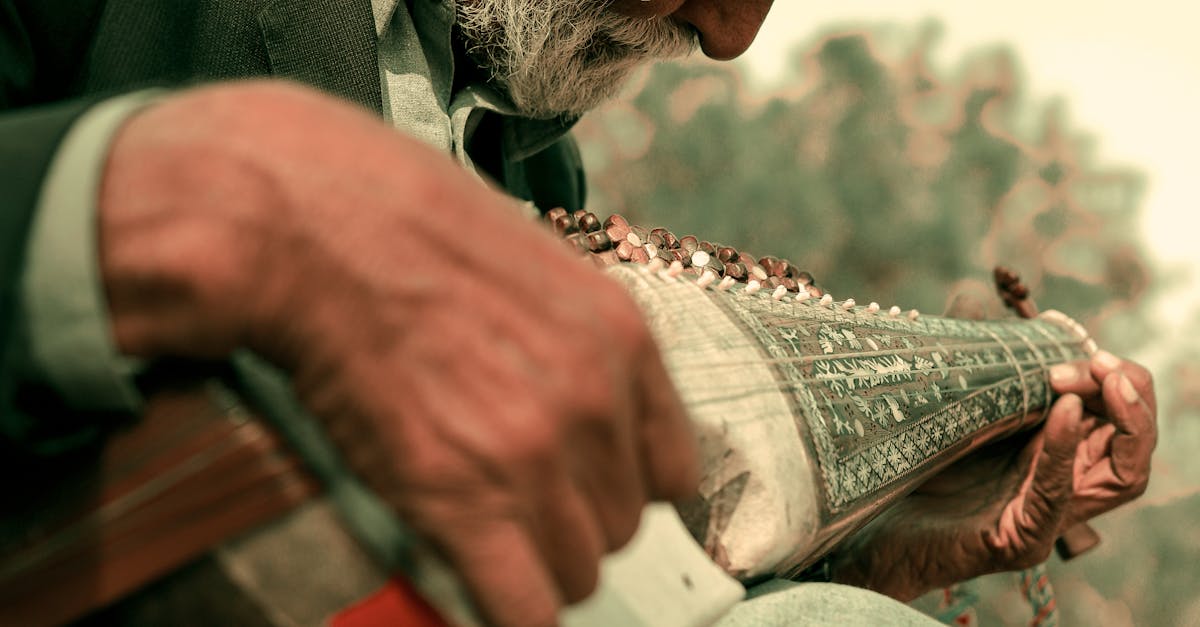PRASHAD: Divine Food
-
PRASHAD Scheme Overview: The Pilgrimage Rejuvenation and Spirituality Augmentation Drive (PRASHAD) scheme, launched in 2014 by the Ministry of Tourism, aims to develop pilgrimage sites across India. It focuses on improving infrastructure (roads, water, sanitation), connectivity, conservation, and local community development through skill-building and eco-friendly tourism practices. 41 cities across 25 states are part of the scheme.
-
Parliamentary Committee Concerns: A Parliamentary committee has expressed disappointment over the slow progress of projects under both the Spiritual Tourism Circuits (under Swadesh Darshan Scheme) and PRASHAD. The committee specifically mentioned delays in two Kerala circuits (Sabarimala and Sivagiri).
-
Delays and Reasons: Delays in project completion were attributed to lack of clearances from temple authorities. The completion status of the Kerala circuits is at 76% and 51%, respectively.
-
Committee Recommendations: The committee recommended the Ministry develop a clear Standard Operating Procedure (SOP) and obtain prior approvals to ensure timely project completion. They also noted that only 21 out of 45 PRASHAD projects have been completed and urged the Ministry to anticipate potential problems early on.
-
Key Objectives: The PRASHAD scheme aims to upgrade infrastructure, improve travel conditions, conserve pilgrimage sites, promote cultural and spiritual significance, and create livelihood opportunities for local communities.
-
Funding Model: The scheme uses a 100% public funding model with additional support through CSR and PPP.
Ranikhet Disease
-
Outbreak in Poultry: Ranikhet disease is suspected to have caused the death of approximately 1.5 lakh chickens in both Andhra Pradesh and Panchkula, indicating a significant outbreak.
-
Highly Contagious and Fatal: It is a highly contagious viral disease, especially affecting poultry like chickens, with a mortality rate potentially reaching 50-100%.
-
Symptoms: Birds exhibit respiratory issues (sneezing, gasping), neurological problems, and digestive problems, often followed by rapid deaths. Production drops and fertility issues occur.
-
No Cure: There is no effective treatment for Ranikhet disease currently.
-
Transmission: The disease spreads through direct contact with infected bird secretions (especially feces), contaminated feed, water, implements, and the environment. The virus can survive in the environment for weeks.
-
Zoonotic Potential: While primarily affecting birds, it can cause conjunctivitis in humans, although it is generally mild and self-limiting.
-
Affected Regions: Outbreaks have been reported in both Andhra Pradesh (Eluru, Guntur, Prakasam, and the twin Godavari districts) and Panchkula (Barwala and Raipur Rani).
-
Panchkula Concerns: Panchkula’s poultry farms have previously been affected by Ranikhet.
-
Contributory Factors: The cold wave and pre-existing conditions in the birds, such as older birds not being replaced, have also played a major role, especially in the outbreak in Panchkula.
-
Migratory Birds: Droppings from migratory birds are suspected to be a potential cause for the spread.
Fort William
-
Name Change: Fort William, the headquarters of the Eastern Army Command in Kolkata, has been renamed Vijay Durg. Kitchener House is now Manekshaw House, and St. George’s Gate is now Shivaji Gate. This shift aims to eliminate colonial practices.
-
Reasoning Behind the Change: The renaming is part of a broader initiative to remove “vestiges of the colonial era” and “Indianise” military traditions, following Prime Minister Modi’s call for “freedom from the mentality of slavery.”
-
Historical Context: Fort William, originally built by the British in 1773 and named after King William III, was a significant historical landmark. Vijay Durg is named after a fort that served as a naval base for the Marathas under Chhatrapati Shivaji.
-
Wider Initiatives: The renaming aligns with other changes like a new naval ensign, the replacement of musical tunes, and reviews of ceremonial practices and attire, all aiming to distance the armed forces from their colonial past.
Ekuverin Fitness
- Exercise Ekuverin: The 13th edition of the joint military exercise between the Indian Army and the Maldives National Defence Force has begun in the Maldives.
- Why: This is a key event highlighting the ongoing military cooperation between India and the Maldives.
- Meaning and Nature: “Ekuverin” means “Friends” in Dhivehi. It’s an annual bilateral exercise conducted alternately in India and the Maldives.
- Why: It signifies the close and friendly relations between the two countries.
- Focus: The exercise concentrates on counter-insurgency, counter-terrorism operations, and humanitarian assistance and disaster relief.
- Why: It enhances interoperability and operational capabilities of both armies in critical areas.
- Duration and Location: The exercise is 14 days long and is being held in the Maldives this year.
- Why: The alternating location demonstrates mutual commitment and provides diverse training environments.
- Significance: It aims to strengthen the ties between India and Maldives.
- Why: It further bolsters cooperation and goodwill between both nations.
- Key Participants: The opening ceremony was attended by the Maldives Defence Chief and the Indian High Commissioner.
- Why: This underscores the importance both nations place on the exercise and their bilateral relationship.
Bryospilus Bharaticus
- New Species Discovery: A new species of water flea, Bryospilus (Indobryospilus) bharaticus n. sp., has been discovered.
- Location: Found in moss growth on walls of Korigad Fort near Pune, India.
- Significance: This is the first record of this genus in Tropical Asia.
- Unique Adaptations: The water flea uses antennae as “supports” for movement in water films on moss and has no main eye due to low-light conditions.
- Habitat & Relatives: Related species are found in semi-terrestrial habitats in rainforests of West Africa, South and Central America, and New Zealand.
- Gondwanaland Connection: Ancestors of the species may have existed on the Indian subcontinent before the breakup of Gondwanaland.
- Biodiversity Indicator: The discovery highlights the rich biodiversity of the Western Ghats and the importance of protecting pristine habitats, as this species is vulnerable to human disturbance.
- Evolutionary History: The species’ presence points to an old evolutionary history in the region, potentially predating the breakup of Gondwanaland.
- Environmental Concerns: The researchers caution about the potential impact of rising air pollution and human disturbances on this unique semi-terrestrial ecosystem.
Stryker ICV
- Stryker Deal in Focus: The co-production deal for Stryker infantry combat vehicles is a key topic during Indian Prime Minister Modi’s upcoming visit to Washington DC, especially in light of President Trump’s push for India to buy more U.S. military equipment.
- Stryker’s Capabilities: Stryker is an eight-wheel-drive combat vehicle family known for its speed, flexibility, and suitability for urban and quick-response scenarios. It has various configurations, including the Infantry Carrier Vehicle (ICV).
- Indian Army’s Interest: The Indian Army is looking for ATGMs (Anti-Tank Guided Missiles) mounted on infantry combat vehicles and has evaluated Stryker’s performance in high-altitude conditions in Ladakh.
- High-Altitude Testing: Stryker was tested in Ladakh between 13,000 and 18,000 feet, along with the Javelin ATGM. Further trials are expected.
- Co-production Plan: The plan involves importing a small number of Strykers initially, followed by license manufacture in India, likely by Bharat Earth Movers Limited (BEML).
- U.S. Push for Procurement: President Trump has emphasized the importance of India increasing its purchase of American-made security equipment.
- Negotiations and Demonstrations: Negotiations are progressing, and Stryker has been demonstrated for the Indian Army. Repeat trials of the Javelin ATGM are awaited.
- Strategic Significance: The deal is part of a broader effort to strengthen defense cooperation between India and the U.S., potentially deterring adversaries.
- Previous Evaluations: The U.S. has previously demonstrated Stryker and Javelin to the Indian Army.

Taranaki
-
Official Names & Status: Mount Taranaki, also known as Taranaki Maunga, is a natural feature in New Zealand with human status, similar to Te Urewera National Park and Whanganui River. It has two official names: Mount Egmont and Mount Taranaki.
-
Geographic Location: Situated in Egmont National Park, North Island of New Zealand.
-
Volcanic Nature: A stratovolcano (composite cone) formed by alternating layers of ash and lava, known for its symmetry. It’s a dormant, snow-capped volcano and the second highest mountain on the North Island.
-
Formation: Created by the subduction of the Pacific Plate beneath the Australian Plate, with magma likely sourced from deeper than the Taupo Volcanic Zone.
-
Geological Features: Features a circular ring plain formed from lahars and landslides.
-
Cultural Significance: Highly respected by the Māori people as a sacred ancestor.
-
Important Facts:
- The real name is Mount Taranaki, also known as Taranaki Maunga.
- Mount Taranaki is a strato-volcano.

Iskander-M: Overview
- Russian Short-Range Ballistic Missile: The Iskander-M is a road-mobile missile system developed by Russia.
- Service and Use: It entered service in 2006 and was first used in 2008 against Georgia. This indicates its operational readiness and combat experience.
- Targeting: Designed for tactical strikes on small, high-value land targets. This suggests its role in targeting specific military or strategic assets.
- Versatility: It can carry different types of missiles.
- Specifications: The missiles have a maximum range of 500 km and can carry payloads between 480-700 kg. These specifications define its operational reach and destructive power.
- Warhead Capabilities: Capable of carrying both conventional and nuclear warheads. This highlights its strategic importance and potential for escalation.
- Speed and Altitude: Missiles can travel at up to Mach 7 and reach altitudes of over 30 miles, showcasing its speed and ability to penetrate defenses.
- Defense Penetration: Employs a maneuverable reentry vehicle (MaRV) and decoys to defeat missile defense systems. This is critical for ensuring target destruction.
- Guidance Systems: Equipped with systems for in-flight correction and self-targeting to overcome missile defense systems.
- Export Versions: There’s an export version (Iskander-E) with a 280 km range. A newer version (Iskander-K) has a cruise missile R-500 with a 280 km max range. This shows Russia’s efforts to export and evolve the system.
Santorini
-
Mass Evacuation: Thousands of residents have fled Santorini due to a swarm of earthquakes. Approximately 9,000 residents have already evacuated.
-
Intense Seismic Activity: Over 300 earthquakes have been recorded near Santorini in the past two days, and seismic activity may continue for weeks.
-
Government Response: The Greek Prime Minister has urged calm. Schools are closed, and large indoor gatherings are discouraged. Authorities are taking emergency measures as a precaution. Shelters and food provisions are planned in case of stronger tremors.
-
Geological Context: Santorini is a volcanic crater island. Authorities have stated that the recent earthquakes are related to tectonic plate movements, not volcanic activity.
-
Island Characteristics: Santorini is known as Greece’s “Instagram Island,” attracting millions of visitors annually. It’s a popular tourist destination famous for its views, white-washed houses, and dramatic scenery.
-
Past Seismic History: Santorini experienced a 7.5 magnitude earthquake in 1956, which resulted in fatalities and injuries.
-
Location: Santorini is located in the Aegean Sea, approximately 128 nautical miles southeast of the Greek mainland. The Aegean Sea is bordered by Greece to the west and north and Turkey to the east.
Brucellosis
- Recent Death: An eight-year-old girl in Kerala died from brucellosis after a two-month battle. This highlights the severity of the disease.
- Cause: Brucellosis is a bacterial disease caused by Brucella species, primarily infecting livestock.
- Transmission: Humans contract it through contact with infected animals, consumption of contaminated animal products (especially unpasteurized milk and cheese), or inhaling airborne agents.
- Symptoms: Common symptoms include fever, weakness, weight loss, and general discomfort, which can sometimes be mild and go undiagnosed. The incubation period varies.
- Risk Factors: People of all ages are at risk, but those working with animals (farmers, butchers, vets, etc.) face higher exposure risks.
- Treatment: Brucellosis is treated with antibiotics.
- Prevention: Vaccination of livestock and pasteurization of milk are crucial preventative measures. Educational campaigns about avoiding unpasteurized products are also important.
- Kerala Context: Sporadic cases have been reported in Kerala, with deaths being rare.
- Rose Bengal Test: This is a test to detect antibodies for Brucella in human and animal serum.